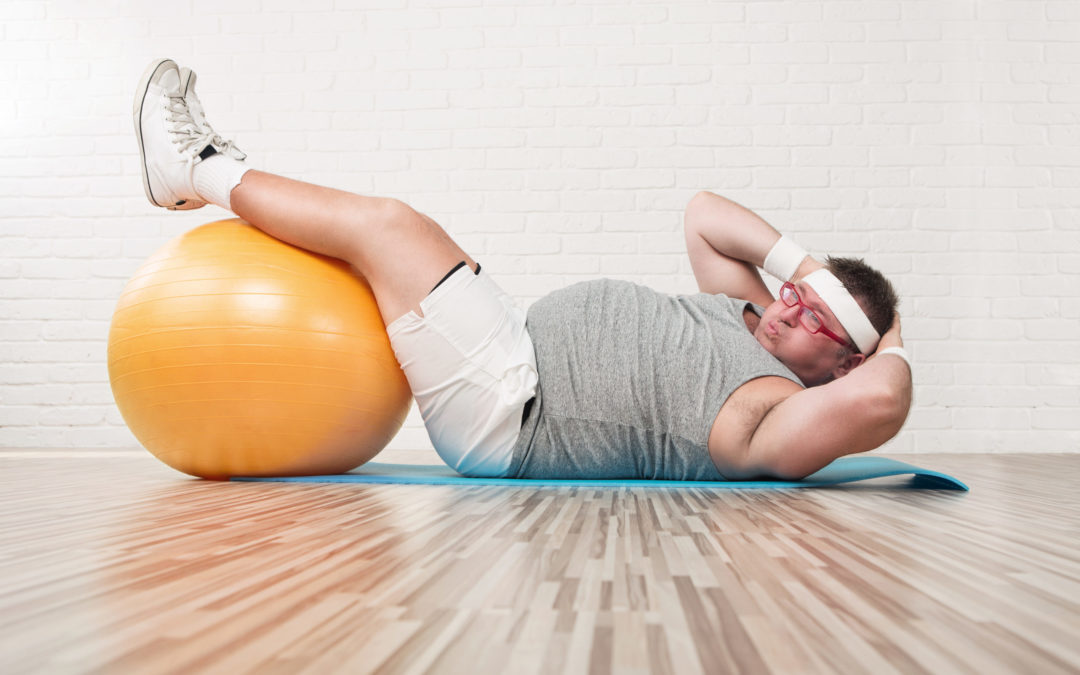I will never tell you not to exercise if you want to. Exercise has enormous benefits, both mental and physical. I don’t even need to get into all those benefits, because most people are well aware that exercising is good for you.
However, it is misguided to believe the reason why you haven’t reversed your Type 2 Diabetes or lost all the weight is because you aren’t exercising enough.
Why? The answer is quite simple.
Obesity and Type 2 Diabetes are not caused by a lack of exercise.
They are caused by diet, both WHAT and WHEN you eat. This is what is driving high levels of insulin, which ultimately lead to weight gain and insulin resistance.
I will use the metaphor Dr. Jason Fung applies here because it is simple and useful.
Over-consumption of sugar and starches are like a bathtub faucet turned on full blast. Energy expenditure is like the bathtub drain. Widening the drain of the tub would be like exercising. Though you’re allowing more water out, the tub is still overfilling. What’s the solution? TURN OFF THE FAUCET.
This means slowing or stopping the intake of refined carbohydrates like sugar and starch. Simple, right? Easy? Not for everyone. 🤨
Let’s get into more details, in the case that you’re a geek like me and want more of an explanation.
Exercise improves insulin sensitivity, but not where it matters the most.
When you exercise, your energy needs go up. Your muscles are burning more fuel. In order to get ready access to the glucose in your blood stream, it’s important that your muscle cells respond to insulin. Insulin opens the door that allows glucose to enter the cell.
After a bout of moderate intensity exercise, glucose uptake by muscle cells improves by at least 40%. This lasts for about 48 to 72 hours. The impact of a single episode of exercise on insulin sensitivity does not persist beyond 4-5 days.
While this is good to know, exercise has little to no impact on insulin resistance in the liver, which is the primary driver of Type 2 Diabetes.
The liver is responsible for processing carbohydrates taken in through our diet. It breaks down and converts carbohydrates from all sources into glucose which becomes available in our bloodstream as energy for the rest of our body. It also stores extra glucose as glycogen or fat, through a process called de novo lipogenesis (DNL).
When overwhelmed with too much carbohydrate, DNL accelerates, producing excessive amounts of fat in the form of triglycerides. The fat has to be stored, and begins to accumulate in the liver.
The liver is not a safe place to store fat, and interferes with the function of the liver, often leading to non-alcoholic fatty liver disease. Fatty liver is a leading cause in the United States for cirrhosis and is strongly correlated with Type 2 Diabetes and obesity.
Insulin resistance in the liver results from liver cells simply being packed to max capacity with glucose, glycogen, and fat. The only way to reverse this process is by allowing the liver to empty out the glucose and the storage.
This is accomplished by decreasing the consumption of carbohydrates, especially concentrated forms like sugar and starch. As in, giving your liver a break.
Since we can’t exercise our liver, exercise doesn’t directly affect insulin resistance in the liver.
If exercise means more calories out, why doesn’t it cause weight loss?
Over and over, exercise has failed to show in clinical studies that it is an effective weight loss strategy.
The E-MECHANIC study published this year provides some insight into WHY we don’t lose weight when we exercise more.
The truth is increasing exercise leads to appetite stimulation and corresponding increased food intake. On top of that, exercisers justify increased food intake. The result? No weight loss and sometimes weight gain.
Have you ever experienced starting a new exercise program and all the mind chatter around food that seems to crop up? Fueling your workouts, refueling after workouts, thinking an extra apple or granola bar is deserved because of a hard workout.
This information I unfortunately learned from personal experience. Two and a half years ago, I accepted a friend’s invitation to run a trail race in the Big Horn Mountains. At 18 miles, it would be the longest race I had ever ran. I later went on to run my first ultramarathon in April of this year, a 32 mile distance.
With all this running, I expected to lose some weight. Seems reasonable, right?
Well, I was disappointed. I never lost a single pound training all those months. In fact, after the first race, I was determined to figure out how to lose the extra 10 pounds, so I finally focused on my diet. And wouldn’t you know, that was the ticket!
So many diabetics I talk to are convinced that if they would just exercise MORE, their blood sugars would normalize. Some of them are already putting in a great deal of effort!
Of course, I don’t discourage exercise, but I don’t want them to continue thinking that this is the missing piece.
Focusing on tracking 20,000 steps a day or training for a 5K will not get you off of your diabetes medications or reverse your diabetes.
For those of you who are not exercising regularly, this could be good news or bad news. It might be good news if you have been judging yourself for not exercising. But it could be bad news if you’ve believed that all you need to do is start exercising.
Facing your food is THE HARDEST PART.
If it were easy, everyone would reverse their diabetes and lose all the weight, right?
It isn’t easy, but it is possible. Never stop believing in that. This is what I do as a certified life coach. I teach people the physical and mental solutions to reversing Type 2 Diabetes and getting off their meds by addressing the CAUSE. If you’re interested in finding out more, click here:


